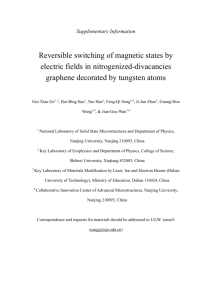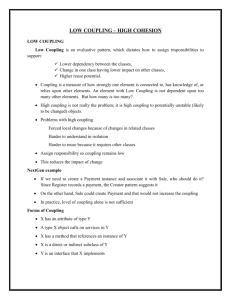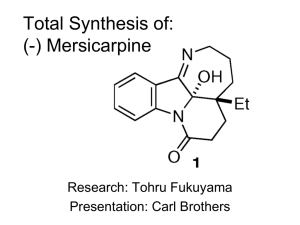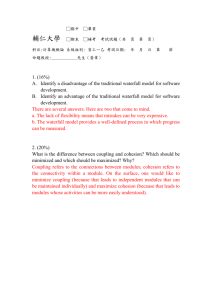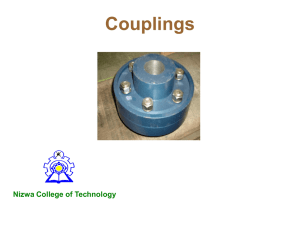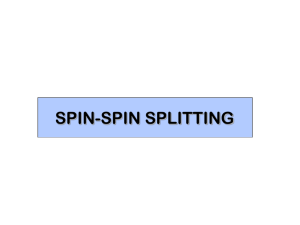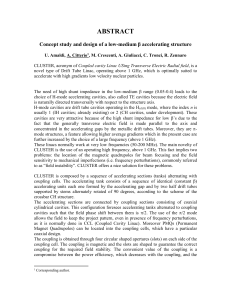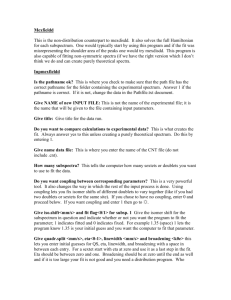supl-pd4cos - Royal Society of Chemistry
advertisement
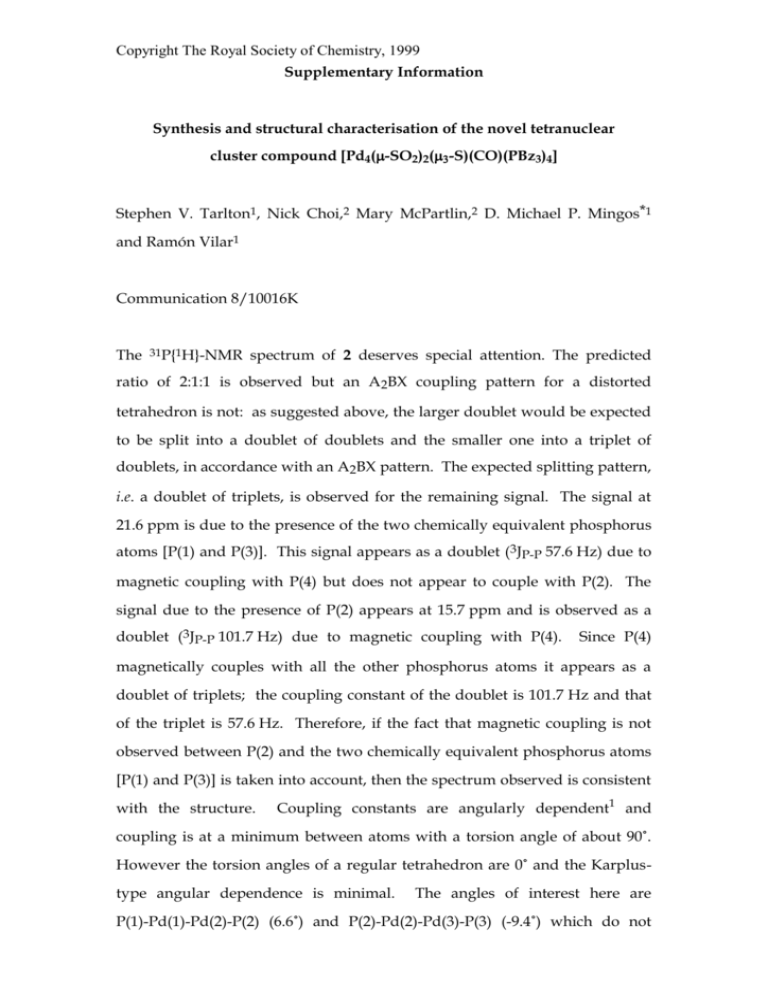
Copyright The Royal Society of Chemistry, 1999
Supplementary Information
Synthesis and structural characterisation of the novel tetranuclear
cluster compound [Pd4(-SO2)2(-S)(CO)(PBz3)4]
Stephen V. Tarlton1, Nick Choi,2 Mary McPartlin,2 D. Michael P. Mingos*1
and Ramón Vilar1
Communication 8/10016K
The
31P{1H}-NMR
spectrum of 2 deserves special attention. The predicted
ratio of 2:1:1 is observed but an A2BX coupling pattern for a distorted
tetrahedron is not: as suggested above, the larger doublet would be expected
to be split into a doublet of doublets and the smaller one into a triplet of
doublets, in accordance with an A2BX pattern. The expected splitting pattern,
i.e. a doublet of triplets, is observed for the remaining signal. The signal at
21.6 ppm is due to the presence of the two chemically equivalent phosphorus
atoms [P(1) and P(3)]. This signal appears as a doublet (3JP-P 57.6 Hz) due to
magnetic coupling with P(4) but does not appear to couple with P(2). The
signal due to the presence of P(2) appears at 15.7 ppm and is observed as a
doublet (3JP-P 101.7 Hz) due to magnetic coupling with P(4).
Since P(4)
magnetically couples with all the other phosphorus atoms it appears as a
doublet of triplets; the coupling constant of the doublet is 101.7 Hz and that
of the triplet is 57.6 Hz. Therefore, if the fact that magnetic coupling is not
observed between P(2) and the two chemically equivalent phosphorus atoms
[P(1) and P(3)] is taken into account, then the spectrum observed is consistent
with the structure.
Coupling constants are angularly dependent1 and
coupling is at a minimum between atoms with a torsion angle of about 90˚.
However the torsion angles of a regular tetrahedron are 0˚ and the Karplustype angular dependence is minimal.
The angles of interest here are
P(1)-Pd(1)-Pd(2)-P(2) (6.6˚) and P(2)-Pd(2)-Pd(3)-P(3) (-9.4˚) which do not
Copyright The Royal Society of Chemistry, 1999
deviate enough from a regular tetrahedral arrangement to explain why
coupling is not observed. It is possible, however, that the coupling constant
via the Pd-Pd bond is equal but opposite in sign to the coupling constant via
the SO2 ligands. Grim et al. have demonstrated that overall phosphorusphosphorus coupling constants in coordinated bis-phosphorus ligands can be
separated into two components: transmission via the bonds in the ligand
backbone (JBPP) and via the bonds through the metal center (JMPP), i.e.
JPP = JBPP + JMPP.2
3J
P(1)-P(2)
Applying
this
principal
to
complex
2,
if
= -4JP(1)-P(2) and 3JP(2)-P(3) = -4JP(2)-P(3) (where 3J coupling is along
the P-Pd-Pd-P bonds and 4J coupling is along the P-Pd-S-Pd-P bonds) then no
phosphorus-phosphorus coupling would be observed.
References
[1] M. Karplus, J. Am. Chem. Soc., 1963, 85, 2870.
[2] S. O. Grim, R. C. Barth, J. D. Mitchell, and J. Del Gaudio, Inorg. Chem., 1977,
16, 1776.


